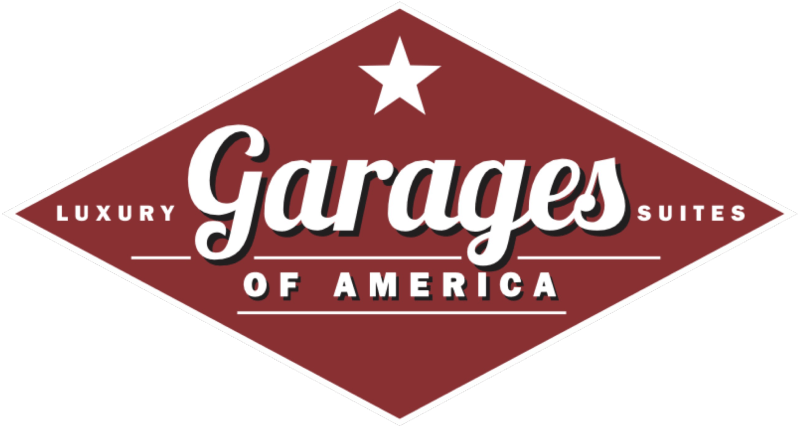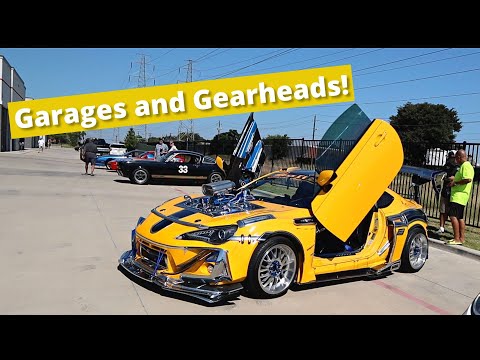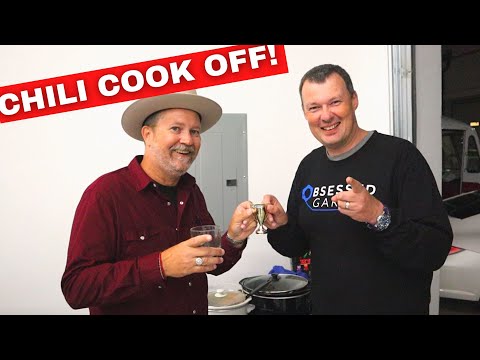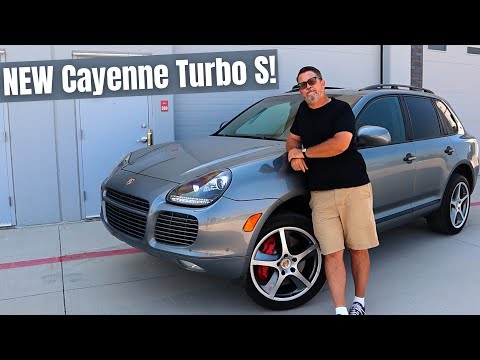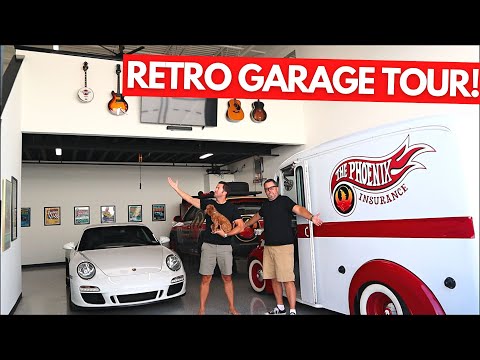Meet the Driver – Jack Griffin and M.L.Speer: Le Mans Drivers
Meet the Driver – Jack Griffin and M.L.Speer: Le Mans Drivers
Tonight, we are at Garages of Texas to bring you a very special event. Meet the drivers with Jack Griffin and ML Spear. These are a couple guys who’d met each other driving the 24 Hours Le Mans and are going to reminisce about the glory days of racing.
You’re not going to see a whole lot of us in that video, and I know some of you out there are happy about that. So let’s go inside and check out what’s going on. I think they’re starting now. Come on.
You. know how I met Jack Griffin. Okay. About 35 or 40 years ago, right out of college, we had a mutual friend, and I was working and bought a Porsche. And this mutual friend said, man, you need to meet Jack.
Brittany. He’s a Porsche man, that type of thing, too. And as luck would have it, nothing happened to him. Nothing happened to me. Part of the reason is that I looked over here and I said, I’ve got one portion.
He’s got four portions here right now. I need to do something, kind of catch up with this guy. So several years went by and I had the bright idea that I wanted to get into real estate development, and I wanted to do suburban office buildings.
And I checked around before the Internet, and Jack Griffin’s name kept coming up as the kind of guru of suburban office buildings in Dallas. I called Jack up and asked if we could meet. A few minutes and talk about real estate, et cetera, et cetera.
And he was nice enough to do that. We did meet, and then I took off into the real estate development end of it. And, Jack, what happened next? I was developing office buildings. I had few Porsches 912 and 914, which I still have a couple of 356s.
I’ve been developing office buildings when I was very young. When I had those cars, I was like 28 years old, developing office buildings at a young age. And so? So I met ML. I was probably, I don’t know, 29.
I was very young and he was about the same age. And so fast forward several years later, we had a mutual friend, Steve Loudon, who many of you all probably know. Steve worked on some of my cars and he always had a New Year’s Day party.
And I happened to go at the same time ML was there. And this is after we had met talking about real estate. And I was in the process of leaving my situation with office buildings and so I didn’t know what I was going to do, just kind of do nothing.
And so anyway, I ran into ML. Coincidence? Oh yeah, I remember you. Yeah, we met several years ago. And so we started talking about cars. And I knew that ML had something to do with racing, but I didn’t knew nothing about I’d never even been to a race in my life.
I didn’t know anything about racing. I like cars and had these Porsches. So we start talking about cars and Porsches. You do a little racing. Yeah, I do a little racing. Anyway, so he said, matter of fact, I’m going to be racing in the Daytona 24 hours race in about three weeks.
I said, damn, you are a racer. So I said, damn, that said that’s pretty cool. He said, well you ought to come to the race and be in the pit and stuff like that. So I said, well I don’t have anything better to do.
I’ll do that. I thought that was a big deal. And I’m going to not only go to the race, I’ve never been to a race. But I’m going to actually be in the pit of a race team. So I thought that was pretty cool.
So, ML, you were the true racer? Sorry? Jack, you were the true racer before this all started. So, kind of share with us how you got into racing and how you got the Bug for that. No offense, Jack. Sorry.
Okay. My racing career really started when I was a junior in high school. We lived on a ranch, and I was out digging post holes with a hand post hole digger, and my uncle came by and said he was going to Indianapolis and asked if I wanted to go.
Well, of course, I said yes. I didn’t even know what Indianapolis was. But I’m going to get out of this post hole digging situation. That’s for sure. Well, he was with the press, and he had press passes, and he could get me in the gasoline alley, and I got to sit in some of the cars and talk to some of the drivers.
And, I mean, the hook was set. The hook was set, so. Fast forward on, go to college, get out of college, go to work, make a little money in 1971. Then I went to the Bob Mondron school of high performance driving, and that was in Ontario, California, at that point in time.
And then I, I came back to Dallas, started out in seca with G Production Midget. Then I got a G production. Spitfire. Then after a couple of years, I moved up to a Formula Ford and raced that about three or four years.
And back at that point in time in the Dallas area, we had three tracks. It was pretty active. I was thinking, you know, I want a little more of this. So I got to looking around and I saw endurance racing.
All of a sudden, that makes sense. If you go 24 hours and there’s two drivers, man, I’m going to get 12, 14 hours of seat time in a weekend, so I can get a year’s fixed in one weekend. I then had to figure out where to find a car.
Found a car up in New Hampshire, flew up and bought the car. And I had a group out of Florida that was maintaining the car for us. And our first race was in 1976 at Daytona and it was a year-end race, a 250 miles race.
So we ran that race, and then we started into the endurance season, and we did the 24 hours race, and I ran that 911 for two or three years. Then I sold that, and I ran a couple of years a year with Mazda RX seven, primarily doing the endurance series in IMSA, the International Motorsports Association.
Then we bought an RSR, Porsche RSR, ran that for a little bit. I’m going to let Jack kind of fill in what he did with his racing, how he got started. Continue on, I show up in Daytona to be in the pit with ML.
I’d never been to a race before. I didn’t know what to expect. And it was a real spectacle. It was a lot of fun being in the pit. Next pit over was AJ. Boyd’s team, you know, and Derek Bell and all the big names, stuff like that.
And so I thought, well, I didn’t know ML very well, but the guy, obviously, he’s a pretty good driver, I guess. I was watching the cars as they were on the track, and they were just driving and turning, and it was like, okay, what’s the big deal about that?
It didn’t really register with me. They were going 200 miles an hour. But it looked like, to me, a pretty simple proposition. And having never been on the track before myself, because there were no tracks around here, no place to do that sort of thing, so anyway, it started raining.
And I’m telling you, it rained big time. And people started coming into the pit. I remember Hurley Haywood coming into the pit. A fourth of his car was gone. The left front was completely gone. The wheel, the car he was in on three wheels.
Damn. What’s going on out there? Well, they couldn’t see, basically, and they were crashing and everything. They eventually stopped the race. It was so bad, the drainage and everything. So it was pretty much a fiasco.
And nevertheless, ML’s team, there were three drivers on his team and they finished fourth overall, which is pretty amazing. Pretty amazing. Porsche Factory, Jaguar Bob Tillius’s team, there were some amazing cars there.
So anyway, I thought, well, this is pretty neat deal. And so while ML and we were talking all during the weekend and everything, and toward the end of the weekend, ML said, well, you know, what do you think?
What do you think about this? And I said, well, this looks like a lot of fun. And he said, well, we have a car that you can drive. The next race is the 12 Hours of Sebring. And I think you can do that.
Yes, I know I can do that. So I said, yeah, I’m in. And he said, well, one little thing, you have to go to a racing school and get a license. I said, okay, fine, just tell me what I need to do. Never sat in a race car in my life.
Two months later it came time to go to Botherup racing school to get my license. So the first day we’re sitting at a table and there’s like twelve or 15 guys in the school and we go around the table, where are you from?
Why are you here? Blah, blah, blah. It came to me and I said, Well, I’m from Dallas and I’m driving in the 12 Hours of Sebring next weekend. I’ve never been in a race car before and they seem to think that was the big issue.
And I thought, well, I think I can do it. I get home on Sunday. We left Tuesday to go to Seabird. We’re going to go race. It was not a recommended entry. I would not recommend that to anyone. But. It was a bad deal.
And as is typical at Sebring, it rains and driving in the rain. There are some people that think that’s really pretty cool. I absolutely hate driving in the rain. Racing in the rain. There were three of us driving a 914 six race car.
This particular race car had a very good race history. It had won its class in the Daytona 24 hours, like two years before. So it was a really capable race car. In fact, ML had driven this particular car at Daytona the 24 hours, several years before.
So it was a neat little car. So we decided we would go out and just do like three laps apiece. The first guy, he went out and did three laps. He came back in with the right front finger dangling. He had hit something.
So they duct tape that down. So the second guy goes out to do his three laps, and he had been told, be sure if you hit a rain puddle, do not accelerate, because you’ll lose traction and you’ll over rev the engine.
Well, it didn’t register with him very well. So he came into the pit after only one lap, and there was a device that can tell you how many rpms you’ve done. We were shifting we’re supposed to shift 7200 rpms or something like that.
He had nailed it at 10,000 rpm. So in the car was running rough. We knew the engine was toast. Oh, man. So obviously, I didn’t get to go out. Which is I was happy I didn’t really get to go out. So they said, well, we have another motor in Atlanta, that we can go to Atlanta in the race shop, get the motor, drive all night or whatever, get back, put another motor in the car and get it ready in time for the race.
But you won’t have any practice time and you would not be able to qualify. Start the race at the very back. I’ve never been around the track, didn’t know my way around. And there’s agent all these prototypes all on the track and everything.
So after 15 laps, that’s where I ended up. That concrete wall just somehow managed to jump in front of the car, and I was not hurt, but it pretty much retired the car forever. Car never raced again. I was driving the 935 in the race, and I was looking around, and I came around, and I look over, and I see this car all jacked up on the wall there.
And I said, oh, my gosh, I hope the guy’s not hurt. You kind of feel a little responsibility. Not much, but a little. But a little, yeah. You talk about a sick day, like, why in the hell did I do this is a stupid idea.
And I was ready to just totally I never want to be in a race car again. I never want to go to a race again. I hate this. This is the worst experience I’ve ever had. And so all those things. But I went 15 laps.
And like I said, I didn’t know my way around the track. I didn’t know what I was doing, really. So it would have been very easy to just say, bad idea, no more. Had I been married, I’m sure I would have never done it again.
But I was single, and I got to at least finish a race. The next race was at Daytona, the Paul Revere 250, which is a race that starts at midnight preceding the Firecracker 400 at Daytona. This race. I drive a 911 RSR, which is a phenomenal part, and I was able to this time, able to do a fair amount of driving practice and so forth, and and Daytona’s is actually a pretty easy track.
And I got a fair amount of seat time. And so I ended up really my goal was to finish a race and be done with it. Well, I finished the race, did okay, and I was so hooked, I bought the car, I said, I’m so in, you know.
So I went about to quit, then went from Daytona. I think the next race was Road America. Finished it, did fair, got hit really hard from behind with someone who lost control. And then we went to Canada and drove at Mossport at track outside of Toronto, which is a very very challenging track, really a handful, but we finished and actually finished fourth in our class, which was, I was real happy with that.
Then came back and did a race in Daytona, another race in Daytona, the finale, and did okay in that. So I’m kind of really liking this experience. Getting a little better every time and getting more comfortable.
That was in 1983. In 1984, 1st race was the Daytona 24 hours. So I get there and I was going to drive 911, RSR and ML before the first day of practice. Sold me a why don’t you drive the 935? That’s a damn 935.
That’s a big step up. The RSR had about 320, has 800 had out of the four or five races under my belt. But here again, I’m real competitive. I got someone else, in fact, John Zezika, who bought Bob’s car, got John Zezika to come take my place in the RSR.
And I drove the 935, which was an incredible, really a fun car to drive. I mean, it was a four speed gearbox, 800 horseppower and alot of turbo lag, and a lot of aerodynamics and everything. So it actually was a real fun car.
We had a two hour breakdown and finished. I think we were like I think we were 19th overall, even with the breakdown. So we did fairly well. So after I drive the 935, I never want to drive the RSR again.
I want to drive the 935. So the next race was the 12 Hours of Sebring, and that was the first time that ML and I actually drove together. So we drove the 935 together and gearbox broke. Then the big opportunity, ML tells me that he’s got a chance to drive in the 24 hours of La Mans.
That’s the big daddy, of course, what everyone fantasizes to do. ML says he’s going to drive at 24 hours of La Mans. So it was like, man, I’m going to go be in your pit.
We got about six minutes left to open it up for Q and A real quick. This is a question for ML and Jack. I’m going to try to express it the right way. You both expressed an interest in racing the young age in your 20’s and my question is, what separates I want to race, from I can race?
What’s the edge you got to differentiate yourself from everybody who wants to go fast and fall in love with the fast car? Well, I think it’s really what your ultimate goal is and what you really realistically can do.
We all want to go fast, and that’s good, but we’ve got to understand our limitations, and I think the biggest thing is understanding what your personal limitation is when you’re behind the wheel. In my case, it never remotely occurred to me that I might want to go racing until I met ML when I was 38 years old.
So I didn’t have any ambition whatsoever. I never dreamed that I would actually be racing. And so with me, it happened so quickly, I didn’t have time to think about it. You can get pretty darn good if you practice enough.
That’s not very easy. So at that time, there were no tracks around this area. We had to travel a couple of times. We went to Rhode Atlanta to test and practice a little bit, but we just showed up. With no very little preparation, jumped in the car and got after it. And when you go out and drive, you try to give at least 100% every time. And when you do, that’s what you end up with. That’s where it is, you know, you gotta be realistic, I think.
Is it over yet? Yes, this is a longer form video, I will admit, but I hope you found it as interesting as I did.
How loosey goosey or some of the things that were going on in the 80s. Absolutely fascinating. Hope you enjoyed it. Let us know what you really liked about it by leaving a comment below and we’ll give you a reply.
And be sure and subscribe for more great content like this and all the other fun things that we get up to. Thanks for watching.
